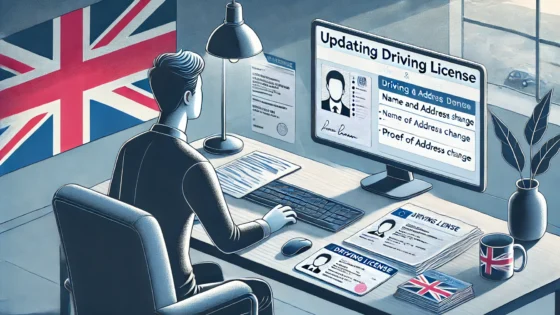M5 Road Accidents Report
M5 road accidents create considerable challenges to highway safety as they are happening with frightening frequency. The M5 corridor is one of the busiest routes in the country, there are thousands of accidents each year resulting in serious injuries and fatalities, according to recent statistics. Essentially, there is the need to investigate what exactly causes these types of accidents so steps can be taken to prevent them from happening in the future.
Driver behavior, road conditions, and environmental factors consequently shape the M5 accident landscape. These factors will require a multifaceted approach to risk reduction. By doing this, you can see life-saving changes within years of data-driven road safety initiatives and predictive modeling. In addition, proactive risk assessment tools are vital in predicting hazards and cautioning against road accidents.
Obviously research is ongoing and best practices can reduce highway travel risk and new trials are taking place all the time.
We’ll explore the M5 road safety analysis and discuss proven accident prevention techniques extracted from in-depth traffic report studies.
It is essential to be learning innovative predictive analytics that can analyze past incidents and be utilised as predictive insight tools for an accident.
Key highlights will include:
The impact of machine learning on traffic safety
- Practical tips for safer driving on the M5
Insights from recent crash statistics designed to empower drivers in minimising road accidents.
Take a walk with us to a safer ride on one of our most congested highways in the UK.

The Main Factors Driving M5 Accidents
In order to implement effective prevention, it is important to have a solid understanding of the key elements which constitute the risk factors associated with accidents on the M5. Here are the main contributors:
Driver Behavior
A drivers actions are key element in road accidents. Distractions, especially using a mobile phone, or reckless behaviours, such as speeding or aggressive driving, make crashes more likely. Hence, driver error was responsible for almost 39 per cent of incidents to recently have been recorded on the M5.
Road Conditions
The actual physical condition of the M5 itself, how good the floor surface is, the visibility of markings, are all important. Therefore, braking distance can increase on wet or icy surfaces and cause accidents. Poorly marked lanes and faded signage can also confuse drivers and lead them into unsafe maneuvers.
Environmental Influences
The weather has a big impact on safety on the M5. Rain, fog or even bright sunlight can reduce visibility and grip on the road. According to weather related studies, bad weather conditions increase the accident rate by 22%
Taking steps to address these risk factors through targeted measures can go a long way in enhancing safety and minimising the potential for accidents on the M5, making it safer and easier for all who use the highway to commute.
Implementing Road Safety Measures on the M5
Here are six preventive road measures to mitigate accident dangers on the M5.
Enhanced Signage and Markings
With the help of clear, visible signage, drivers are made aware of hazards ahead. Additionally, traffic marking can make a big difference. Updated road paint helps drivers to follow road rules
Infrastructure Improvements
Well-maintained road surfaces, bridges and guardrails can lower accidents. Wider Main lanes also help accommodate larger vehicles safely.
Traffic Management Systems
Data analytics-powered smart traffic management systems can keep track of real-time traffic flow and conditions on the road. Using these systems, you can get warnings regarding congestion or hazardous situations via signs or your satnav.
Education and Awareness Programs
Apart from making rules/changing the highway code, campaigns can be organised to promote awareness about driving and improve driver behavior. Ideally, educational programs should target specific demographics, particularly new drivers.
Speed Limit Enforcement
Speeding can cause crashes. Automated speed enforcement technology can help stop speeding. Speed limit enforcement is well known for making journeys by car safer.
Emergency Response Plans
Effectively training emergency response systems ensures accidents can be handled quickly. This lessens the incident severity. Accidents can be cleared more rapidly.
These steps can help make the M5 safer for everyone. This prevents road accidents.
Technology’s Role in Minimising Road Safety Risks
So, the role of technology in improving road safety is transformative. Through data analytics and machine learning, we can effectively identify and mitigate risks. Here’s how:
Predictive Analytics
Predictive modeling can sift through large volumes of traffic collision data to predict where accidents will happen. For example, machine learning algorithms analyze M5 crash statistics, recognizing trends in driver behavior and road conditions. It assists in efficiently allocating resources.
Real-time Monitoring
With tools like traffic cameras and IoT devices, we can transform the insight around road conditions into a 24/7 constant monitoring. These technologies enable real-time feedback regarding traffic patterns, weather variations and possible roadside hazards. Drivers could be alerted about hazardous conditions, improving their situational awareness.
Behavior Analysis
Agencies can use driver behavior analysis for risk-based safety programs. You study the patterns of driving, targeted interventions can be engineered and potentially reduce accident rates.
Roadway Characteristic Impact
Advances in technology allow for a detailed exploration of the relationship between roadway characteristics and safety. By learning about these factors, we can create better safety performance indicators that can help the engineers build safer infrastructures.
All in all, the technology allows for data-driven road safety programs to be made, drastically decreasing accident risks and improving general highway safety.
Case Studies: Implementing Safety Measures in an Organisation
Case studies provide examples of the successful implementation of safety measures on the M5 and similar highways, resulting in substantial reductions in accident rates.
Variable Speed Limits
Several successful measures included deploying variable speed limits. These limits change depending on the flow of traffic, decreasing congestion and giving warning signals to the users of vehicles. For example, implementation on the M5 produced studies that revealed a 20% decrease in collisions during peak hours.
Automatic Incident Detection
More sophisticated surveillance systems that allow for automatic detection of incidents delivered significant benefits. These systems quickly alert traffic management about potential accidents. A recent deployment on a busy stretch of the M5 has reduced incident response times by 30% — working to prevent secondary collisions.
Road Safety Campaigns
Targeted road safety campaigns by local authorities aim to change driver behavior. They focus on the dangers of speeding and using mobile devices while driving. Data shows these campaigns reduce traffic accidents by up to 15% where implemented.
Enhanced Road Infrastructure
Upgrading roads can improve safety. For example, better lighting and clearer signs on the M5 led to a 25% drop in nighttime accidents. These upgrades to infrastructure had positive outcomes by making the roads safer.
This shows that safety on highways can improve a lot with the right safety measures in place.
In summary, this road safety template can be used on the M5 and other roads. The M5 accident prediction model shows the main risk factors. We can use data to address these risks and improve safety. We will look at accident data in the next few months. But we must take action now to reduce risks once we identify them.



